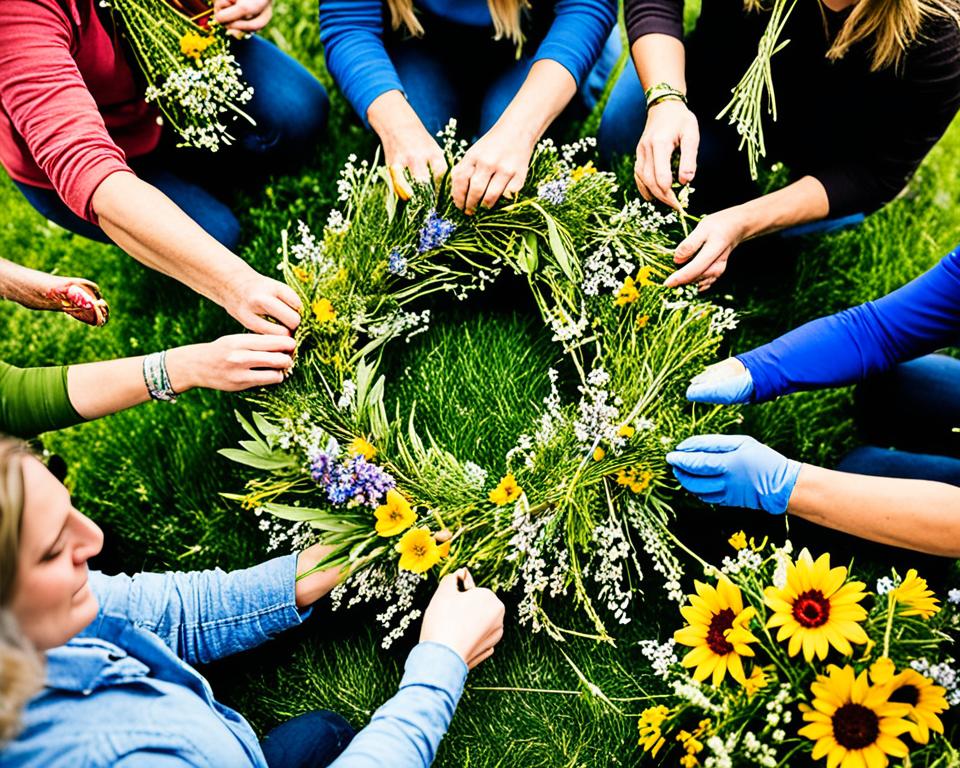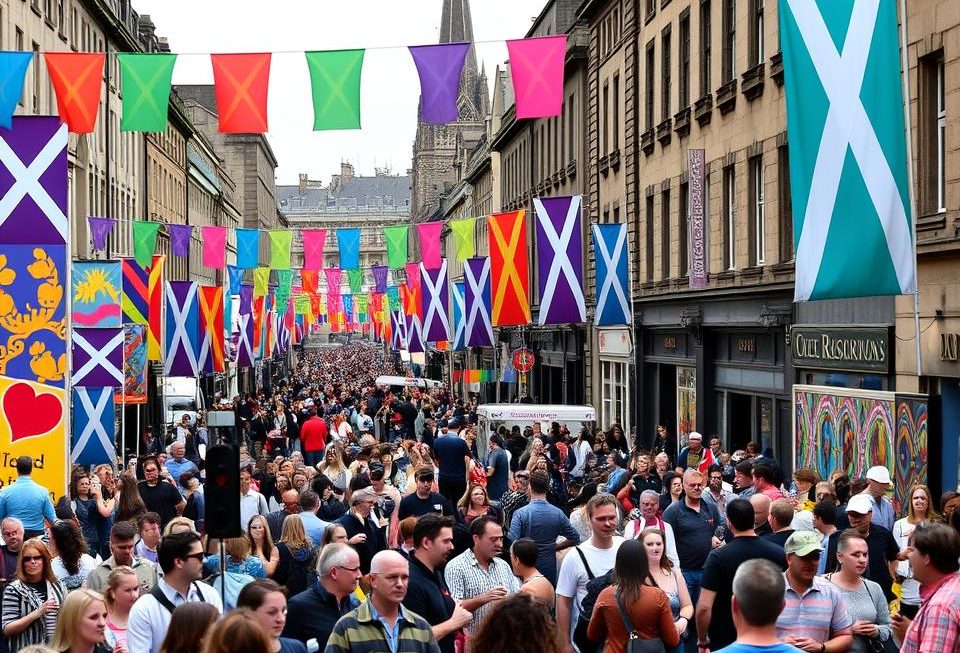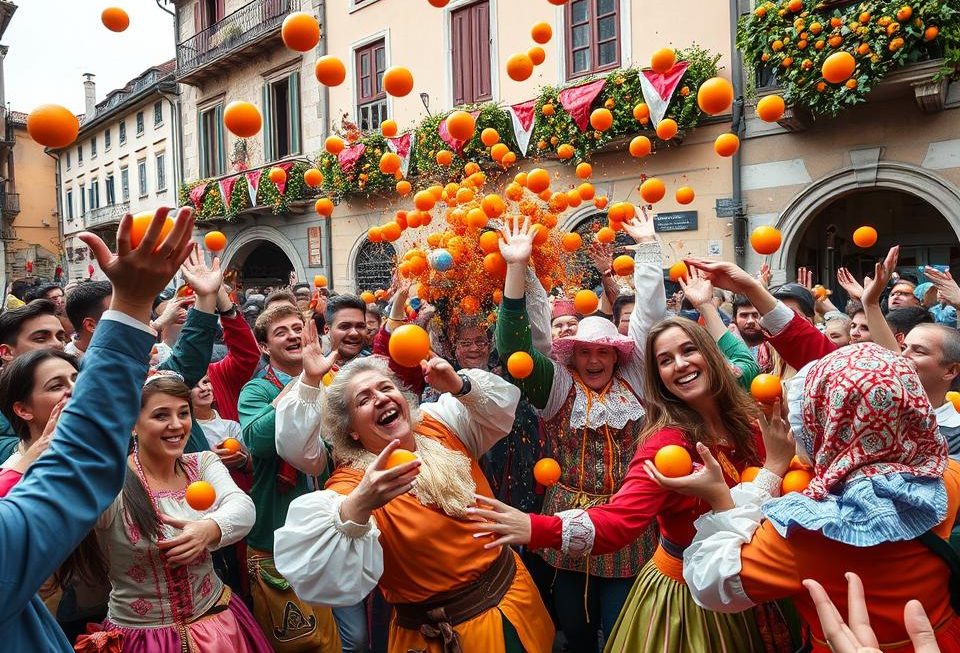The Festival of the Sun marks the summer solstice, the year’s longest day. Cultures worldwide have observed it for ages. They celebrate the sun’s life-giving role with rituals, traditions, and festivities. From ancient solar worship to modern Litha paganism, it’s a time for both spiritual refreshment and cultural tradition.
Read interesting things at : honjo-guruguru
Key Takeaways
- The Festival of the Sun celebrates the summer solstice, the longest day of the year.
- The festival honors the sun’s life-giving powers and embraces nature’s cycles and rhythms.
- It includes a variety of ancient rituals, traditions, and festivities, from solar worship to pagan celebrations.
- The Festival of the Sun provides a unique opportunity for spiritual renewal and cultural heritage preservation.
- The festival is observed by cultures around the world, reflecting its universal significance.
Introduction to the Festival of the Sun
The Festival of the Sun began long ago with solar worship. People worldwide celebrate the summer solstice to honor the sun. They understand its vital role in keeping life on Earth alive and thriving. This event is special because it marks both the longest day and the start of summer.
Origins and Significance
Our celebration of the sun has deep roots. It links back to ancient civilizations that relied on the sun for everything. Throughout history, people have gathered to honor its life-giving light. This act of worship coincided with the summer solstice.
Global Traditions and Rituals
The Festival of the Sun is remembered today in many ways. Different cultures have their unique traditions and rituals. You’ll see this in Europe’s Druid midsummer festivities, as well as Wiccan Litha celebrations. Despite these differences, all these practices celebrate the sun’s energy and the natural world.
Ancient Solar Worship Traditions
The Festival of the Sun originates from ancient times. It honored the life-giving sun. In Egypt, people saw the sun as god Ra. They celebrated him during the summer solstice. Greek and Roman mythologies also mention gods like Helios and Apollo. They were important in their solar worship traditions, marking the roots of today’s celebratory practices.
Egyptian Sun Celebrations
Ancient Egyptians held Ra in high regard, thinking he sailed across the sky daily. During the summer solstice, which marked the longest day, they celebrated. Their festivities included building temples and obelisks, and they performed sacred ceremonies as tributes to Ra.
Greek and Roman Solar Deities
The sun was vital to the ancient Greeks and Romans as well. Helios, in Greek belief, would ride his chariot across the sky. For the Romans, Apollo represented the sun and was highly worshipped. Both cultures celebrated these solar deities through festivals and temples adorned with sun symbols.
Summer Solstice Pagan Rituals
Today, many festivals celebrating the summer solstice look back to ancient pagan traditions for inspiration. The Druids, known for their midsummer celebrations, marked the occasion with big bonfires and the gathering of special herbs. They especially honored the sun’s strength during this time.
Druid Midsummer Festivities
At the heart of the Druid’s summer celebrations were huge bonfires made from sacred woods, especially oak branches. These fires symbolized the sun and its power to cleanse and change things. They also valued certain herbs like mistletoe and chamomile for their magical qualities, using them in ceremonies.
Wiccan Litha Celebrations
Wiccans and other Neopagans celebrate the summer solstice, called Litha, as a time to revere the sun and its life-giving energy. In their celebrations, Wiccans may call upon the sun god in ritual, dance around fires, or set up decorative altars with natural and symbolic items. These activities help them feel in tune with the earth’s natural rhythms and the sun’s vitality.
Festival of the Sun
Celebrating the Summer Solstice
The Festival of the Sun marks the longest day and the start of summer. It’s a lively event that brings people together to honor the sun. They do this by taking part in ancient rituals and traditions. From lighting bonfires to picking herbs, it’s a chance for spiritual growth and keeping culture alive.
Embracing Nature’s Cycles
The Festival of the Sun shows a deep respect for nature and the sun. Celebrating the summer solstice lets people see the sun’s role in bringing life. This event helps everyone to connect with the earth. It also builds a stronger love for nature’s perfect timing.
Fire Festivals and Summer Solstice Bonfires
Many Festival of the Sun events include lighting bonfires and having fire festivals. These traditions use the sun’s power and the fire element. They’re known for purifying, transforming, and marking the summer solstice. Lighting fire festivals and meeting at summer solstice bonfires are key to these lively traditions. They make the celebrations feel warm, energetic, and full of respect.
Bonfires’ flames connect to the sun’s life-giving power. This symbolism encourages people to join in rituals that honor the seasons and earth’s natural cycles. While the fires burn and smoke swirls, Festival of the Sun participants enjoy music, dances, and sharing meals. These events create a strong sense of community and spiritual refreshment during fire festivals and summer solstice bonfires.
Lighting bonfires and holding fire festivals are old customs. They have been carried out by many cultures globally, each with unique ways. From the Celts’ Beltane to Scandinavia’s Midsommar, fire festivals and summer solstice bonfires celebrate the summer solstice. They also give thanks to the sun for its life-sustaining role on our planet.
Cultural Heritage and Spiritual Renewal
The Festival of the Sun marks the summer solstice. It’s a time to celebrate cultural heritage and spiritual traditions that have been around for ages. By joining in ancient rituals and celebrations, people can reconnect with nature. They feel the earth’s rhythms and gain a spiritual renewal.
Ancient Traditions’ Modern Relevance
The Festival of the Sun links people to nature. It lets us celebrate our cultural diversity and share a respect for the sun’s life-giving powers. In tough modern times, these ancient traditions are more important than ever. They make us value the earth’s cycles and the need to reconnect with nature.
Reconnecting with Nature
This festival is a chance to dive into our cultural heritage and spiritual renewal. It helps us bond with the natural world. The practices and events mark our link with the sun and the changing seasons. They bring balance, refreshment, and a greater love for our ancient traditions. These traditions are key to our cultural identity and spiritual well-being.
Midsummer Festivities Around the World
The Festival of the Sun is celebrated worldwide in lively ways. Midsummer events fill many regions with joy. From Europe’s grand Midsummer parties to the special ceremonies of native tribes, people everywhere show their respect for the sun and the Earth.
Europe’s Vibrant Celebrations
Places like Sweden, Finland, and Lithuania are known for their exciting Midsummer celebrations in Europe. These events have dancing, traditional songs, and lighting big bonfires. All this makes for a fun and traditional way to welcome the summer.
It shows how much they value the sun’s energy through their cultural acts.
Indigenous Summer Solstice Rituals
Indigenous groups worldwide hold their own summer solstice ceremonies. For example, Native American tribes have the sun dance. This gathering thanks the sun for life. In New Zealand, the Maori people celebrate Matariki to welcome their new year and winter. All these events show the deep bond between people and nature globally.
Embracing Nature’s Rhythms
The Festival of the Sun shows deep respect for nature and the sun’s vital part in our life. It happens at the summer solstice. Here, people celebrate and embrace the rhythms of nature. They also honor the sun’s life-giving powers as they enjoy the summer’s abundance.
This festival includes lighting bonfires and picking medicinal plants. These traditions show a strong bond with nature. They help people appreciate the sun’s key role in our world.
Honoring the Sun’s Life-Giving Powers
The Festival of the Sun highlights the sun’s importance in supporting life on Earth. People take part in different rites to say how crucial the sun is. They talk about how it affects everything in nature.
The festivity also involves lighting bonfires and gathering herbs. These actions are to show the sun’s brightness and care for us. It’s all about respecting and thanking the sun for what it does for us.
Sustainable and Eco-Friendly Celebrations
Today, people around the globe understand the importance of protecting our planet. This is why many Festival of the Sun events are going green. They use decorations made from local and biodegradable materials. Also, these events rely on renewable energy for light and warmth. Plus, they serve plant-based or locally sourced foods.
Reducing Environmental Impact
Choosing sustainable ways helps Festival of the Sun gatherings make less harm. They still capture the celebration’s nature spirit. How do they do this? By picking eco-friendly products and using energy wisely.

Family-Friendly Summer Solstice Activities
The Festival of the Sun is a special celebration for everyone. It offers family-friendly activities and events. These include crafts, games, and educational workshops. People of all ages can join in, making it perfect for families to enjoy together.
The Festival of the Sun provides many fun summer solstice activities. People can have fun with:
- Handcrafting sun-inspired decorations, like vibrant wreaths and garlands
- Participating in traditional games and competitions, like tug-of-war or sack races
- Attending educational workshops on the science of the summer solstice or the history of sun worship
- Enjoying live music and dance performances that celebrate the rhythms of nature
- Indulging in delicious, locally sourced summer solstice cuisine and refreshing beverages
These activities are not just entertaining. They also teach about traditions and cultural history. By taking part, families make memories. They also learn about the sun’s importance and the natural world around us.
| Family-Friendly Festival Activities | Description |
|---|---|
| Craft Workshops | Hands-on activities to create sun-themed decorations, such as wreaths, garlands, and lanterns |
| Interactive Exhibits | Educational displays and demonstrations exploring the science, history, and cultural significance of the summer solstice |
| Traditional Games | Outdoor games and competitions that celebrate the spirit of the summer solstice, like tug-of-war, sack races, and sun-themed obstacle courses |
| Culinary Experiences | Opportunities to sample delicious, locally sourced summer solstice cuisine and refreshing beverages |
| Artistic Performances | Live music, dance, and theatrical presentations that showcase the cultural heritage and spiritual traditions associated with the Festival of the Sun |
The Festival of the Sun is welcoming to all. It shows us how to enjoy nature and value the sun. Families have the chance to make unforgettable memories. They also get to know more about their culture and the natural world.
Food and Drinks for Midsummer Festivals
The Festival of the Sun wouldn’t be the same without tasty, seasonal treats. It’s a time to enjoy fresh, local food at its finest. These events show off the best of every season, from the bold tastes of nearby fields to the gentle sweetness of orchards.
Traditional Summer Solstice Cuisine
At the heart of this celebration are dishes brimming with fruits, veggies, and grains. They tell a story of the land’s abundance on the longest day of the year. Imagine colorful salads, rich tarts, and meals packed with earthy goodness. Each bite is a tribute to the sun and the energy it shares with us.
Refreshing Summer Beverages
Alongside these meals are drinks to cool and invigorate. Picture herbal teas mixing scents of the garden with every sip. Big bowls of punch, swirling with the juiciest summer fruits, offer a lively sweetness. Then, there’s the cool tartness of lemonades, known and loved by all. They’re more than drinks; they’re the taste of celebration.
| Traditional Summer Solstice Cuisine | Refreshing Summer Beverages |
|---|---|
|
|
Summer Solstice Crafts and Decorations
The Festival of the Sun is a time for creative expression. Many make beautiful crafts and decorations. They create midsummer wreaths filled with fragrant flowers and lush garlands. These items add to the season’s joy.
DIY Midsummer Wreaths and Garlands
DIY projects at the Festival of the Sun let people get creative. Making a midsummer wreath or garland can be fun. It lets everyone enjoy the beauty of the summer solstice.

Picking and putting together flowers, leaves, and branches can be calming. It connects people with the festival and nature. These summer solstice crafts brighten up spaces and remind us of the festival’s joy.
Music and Dance for Midsummer Celebrations
Music and dance play a key role in the Festival of the Sun. Celebrants use traditional songs and dances from around the world. They do this to honor the sun and the longest day of the year. This includes everything from the lively folk dances in Europe to the drumming and chanting in indigenous cultures.
These activities help create a strong sense of community and connect us to nature. The joy and beauty of this music and dance brings people together. It also makes the celebrations feel truly special, emphasizing our connection to the sun’s energy.
| Traditional Music and Dance Styles | Regions and Cultures |
|---|---|
| Folk Dances | Europe (Sweden, Finland, Lithuania) |
| Drumming and Chanting Rituals | Indigenous Cultures (Native American, Maori) |
| Lively Fiddle Tunes | Celtic and Scandinavian Traditions |
| Ceremonial Song Cycles | Pagan and Wiccan Celebrations |
The midsummer season brings out a deep desire in all of us to celebrate. People all over the world use music and dance to feel closer to nature. No matter where you are, whether it’s the beat of a drum or a joyful dance, the Festival of the Sun is about sharing these rich traditions.
Conclusion
The Festival of the Sun joins people from different cultures to celebrate the sun. It marks a time for spiritual renewal and remembering our ancient roots. This celebration links us to nature through the sun, from old solar customs to today’s pagan gatherings.
Attending the Festival of the Sun helps keep cultural heritage alive. It teaches us to value the earth more and offers rituals for growth. In these difficult times, this festival’s message of connecting with nature is more crucial than ever.
The Festival of the Sun shows our deep ties to the summer solstice and nature. Its lively customs and various cultural acts bring us back to what really matters. This celebration highlights the sun and our earth as the sources of life and guidance in our journey.



